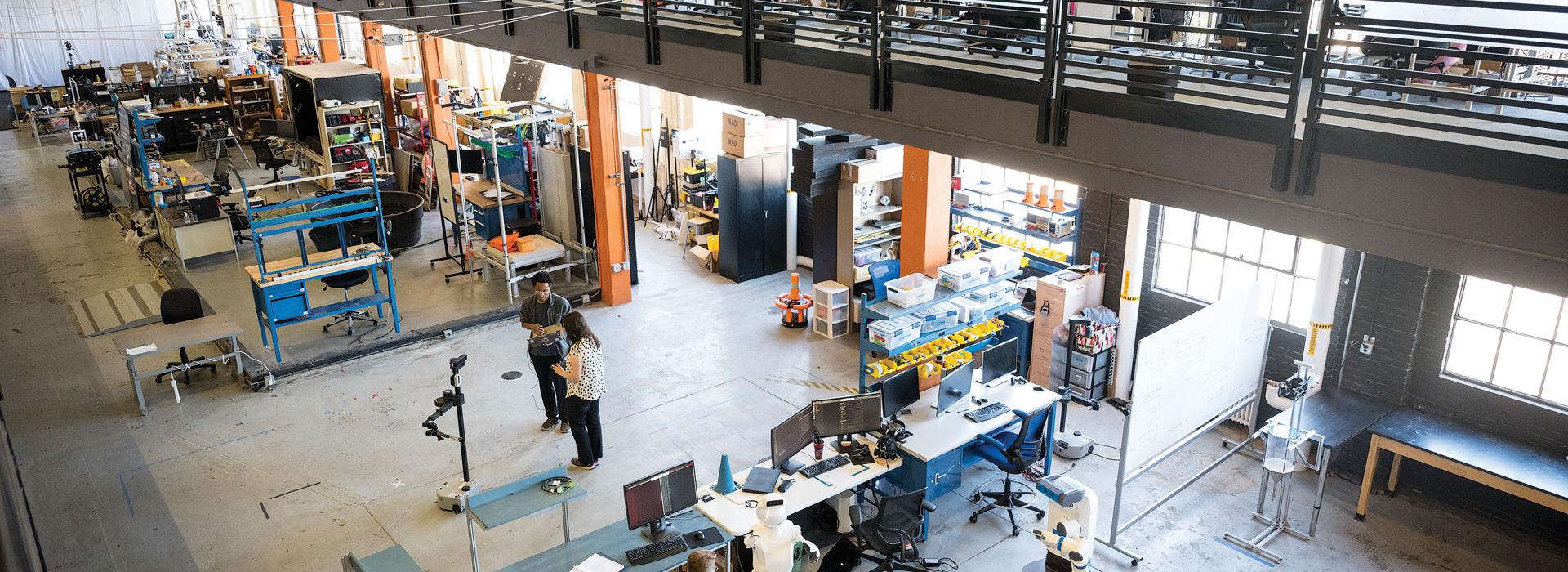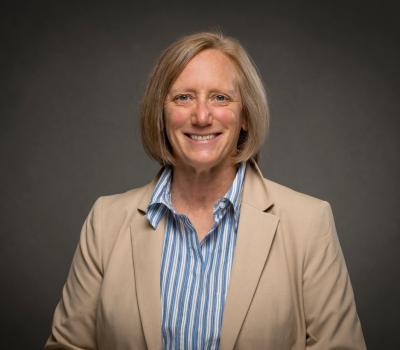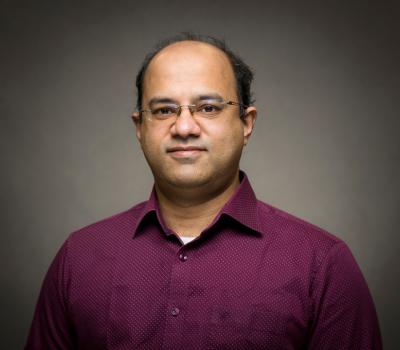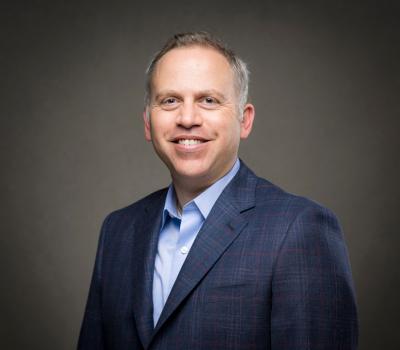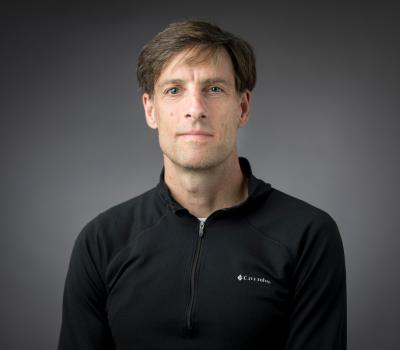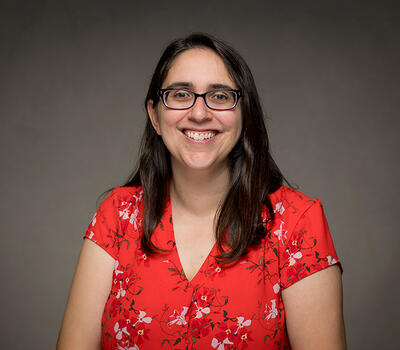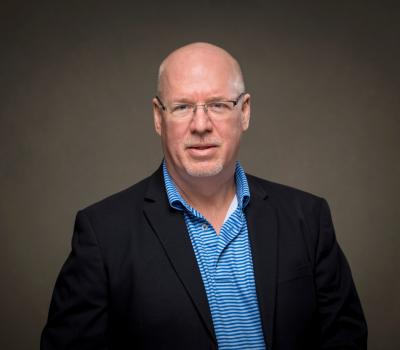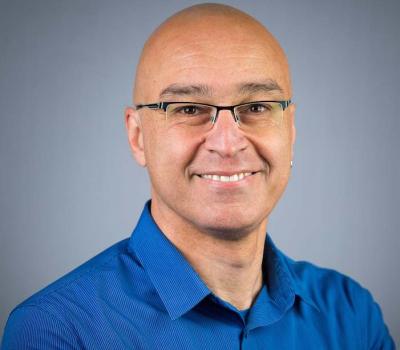Walking into the 18,000-square-foot, high-bay robotics lab in Graf Hall at Oregon State University, one gets the sense that innovation is happening.
Part organized workshop, part messy art studio, the expansive space corrals a vast assortment of robotics projects, where dozens of students are head down in computer code or tinkering with machinery.
Oregon State’s highly regarded robotics program got a late start, according to Kagan Tumer, professor of robotics and the director of the Collaborative Robotics and Intelligent Systems Institute, or CoRIS.
“We had very little in the way of robotics even 15 years ago,” Tumer said. “Starting from scratch allowed us to make decisions that were not available to other programs.”
"The robotics program at Oregon State is world-class, definitely in the top three in the world. The program was built on a futuristic view of what is going to happen in engineering through the intersection of AI and robotics.” – David Kaber, the College of Engineering Dean’s Professor of industrial engineering and robotics who joined Oregon State this fall.
Foundation for excellence
Early investments of time and careful deliberation have worked to Oregon State’s advantage as the university built a world-class program.
CoRIS was founded on a three-pronged vision encompassing education, research, and social impact. Underlying everything is a culture of collaboration within the College of Engineering and across the university — including with agriculture, forestry, oceanography, and many other areas.
Oregon State also had the benefit of a long-established research focus in artificial intelligence, an essential component of robotics. The university was the first in the nation to have an AI doctoral program and is today the only university in the United States to have both robotics and AI doctoral programs.
Strength through breadth
“When you think of robotics, you need to think broadly about physical robots, algorithms, interactions, policy, and ethics. They're all part of robotics research. We study all these different dimensions here,” Tumer said.
The robotics program is a leader in the areas of ethics, field robotics, human-robotic interaction, and marine robotics. It is also known for Cassie, the humanoid robot developed at Oregon State by Jonathan Hurst, professor of robotics, and its successor, Digit, produced by spinout company Agility Robotics.
"The robotics program at Oregon State is world-class, definitely in the top three in the world,” said David Kaber, the College of Engineering Dean’s Professor of industrial engineering and robotics, who joined Oregon State this fall. "The program was built on a futuristic view of what is going to happen in engineering through the intersection of AI and robotics."
Robots in the real world
Industry collaboration and technology transfer are essential to the university’s land-grant mission of applying research to real-world challenges, for the benefit of Oregon’s people and the state’s economy.
The Oregon State Advantage Accelerator helps faculty and students bring their innovations to the market. This enables spinout companies like Agility Robotics to be successful. The company has opened a 70,000-square-foot fabrication facility in Salem, Oregon, with the capacity to produce 10,000 robots per year. Agility’s Digit robots are working in the real world, including at Amazon warehouses where they’re being tested on repetitive tasks, such as emptying bins at the end of the shipping line.
Presented here are just a handful of recent and ongoing projects that demonstrate the breadth and depth of Oregon State’s robotics program.
Beneath the surface
Robots are an obvious solution for underwater applications in marine energy, environmental monitoring, aquaculture, and national defense. And Oregon State is working on all of those.
Marine robotics is thriving here, boosted by Oregon State’s top-ranked oceanography program, facilities like the O.H. Hinsdale Wave Research Laboratory, organizations like the Pacific Marine Energy Center and PacWave, and the new Gaulke Center for Marine Innovation and Technology.
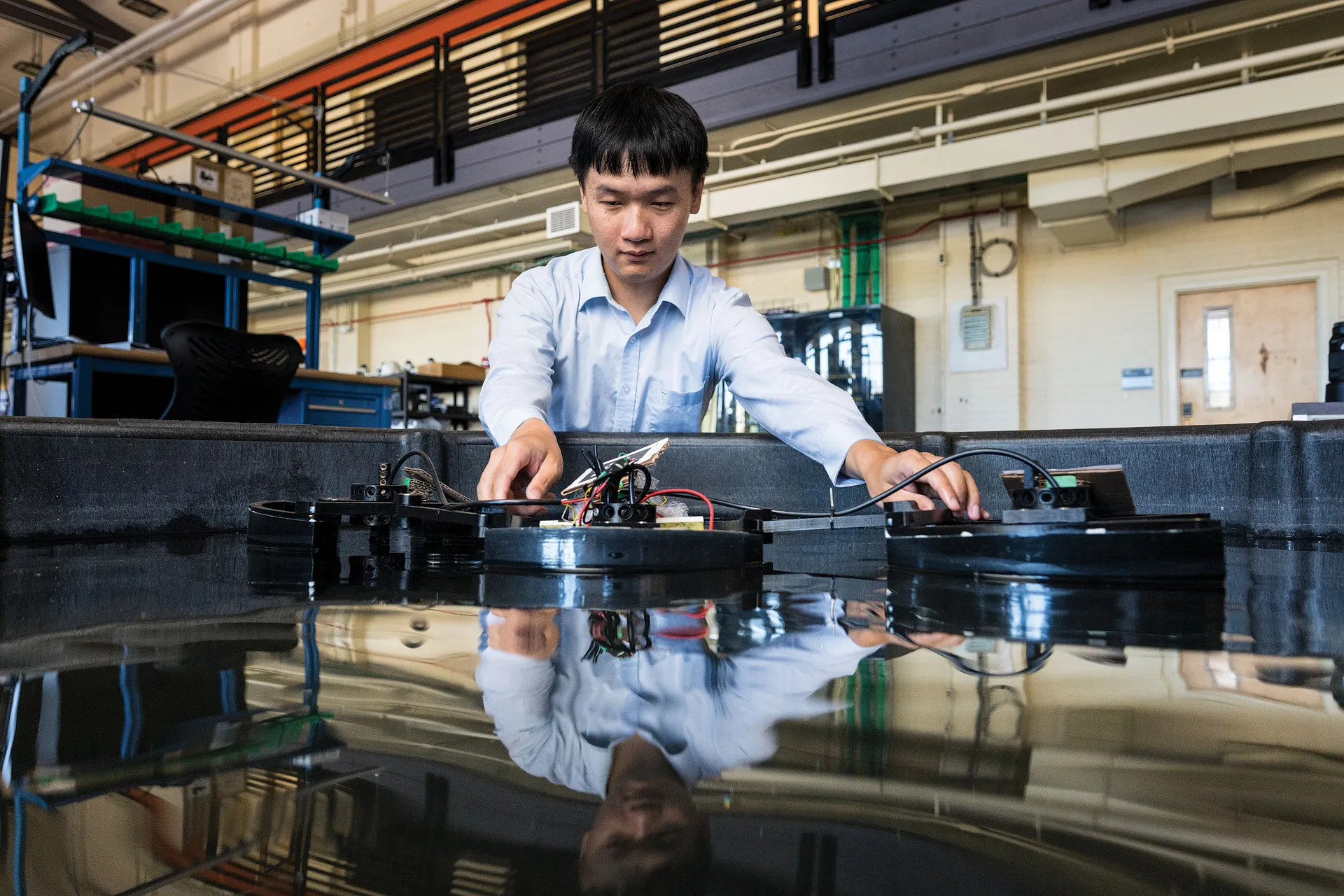
But it’s not easy. Land-based solutions for communication and perception don’t work very well underwater. Wi-Fi, cellphones, and GPS are useless in the ocean, and cameras operate only in clear conditions.
Navigating these challenges is worth the effort for Geoff Hollinger, professor of robotics and the Ron and Judy Adams Faculty Scholar in the College of Engineering.
"What drives me lately are emerging applications, like marine renewable energy, that are impacting climate science and solutions,” Hollinger said.
Hollinger leads several projects working toward resident underwater robotic systems. Such robots could provide a solution for maintaining marine energy arrays, such as the PacWave facility under construction off the coast of Newport, Oregon.
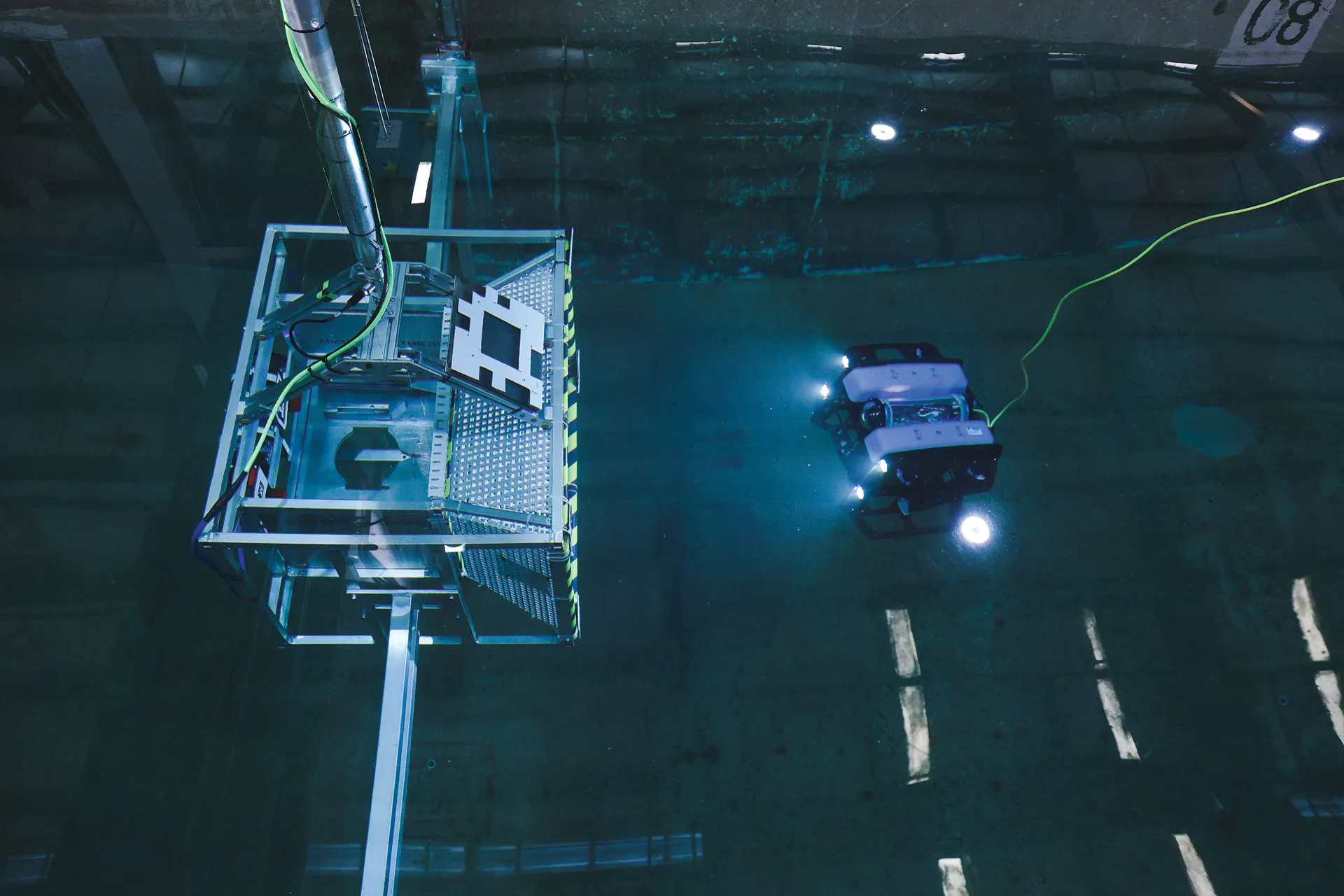
The robots would autonomously perform inspection and maintenance operations, docking themselves at wireless charging stations. One research project is developing soft, reconfigurable, swimming robots that mimic the behavior of gelatinous marine organisms called salps. These squishy robots will be endowed with special powers, including jet propulsion (low-power locomotion) and the ability to squeeze into tight locations like underwater caves. This work is funded by the Navy with support from Sens. Jeff Merkley and Ron Wyden.
In the home
Robots to promote exercise and social interaction are part of a multiuniversity effort developing AI systems to improve the quality of life and independence of older adults. The AI-CARING Institute, based at Oregon State, is funded by the National Science Foundation, Amazon, and Google, with partners in government, industry, and community organizations.
Naomi Fitter, associate professor of robotics and mechanical engineering and Kearney Faculty Scholar, is leading a project to develop and deploy robots in a skilled nursing facility. Researchers are collaborating with a veterans’ home that provides state-of-the-art care, and Fitter says staff and residents alike have been open to new solutions.
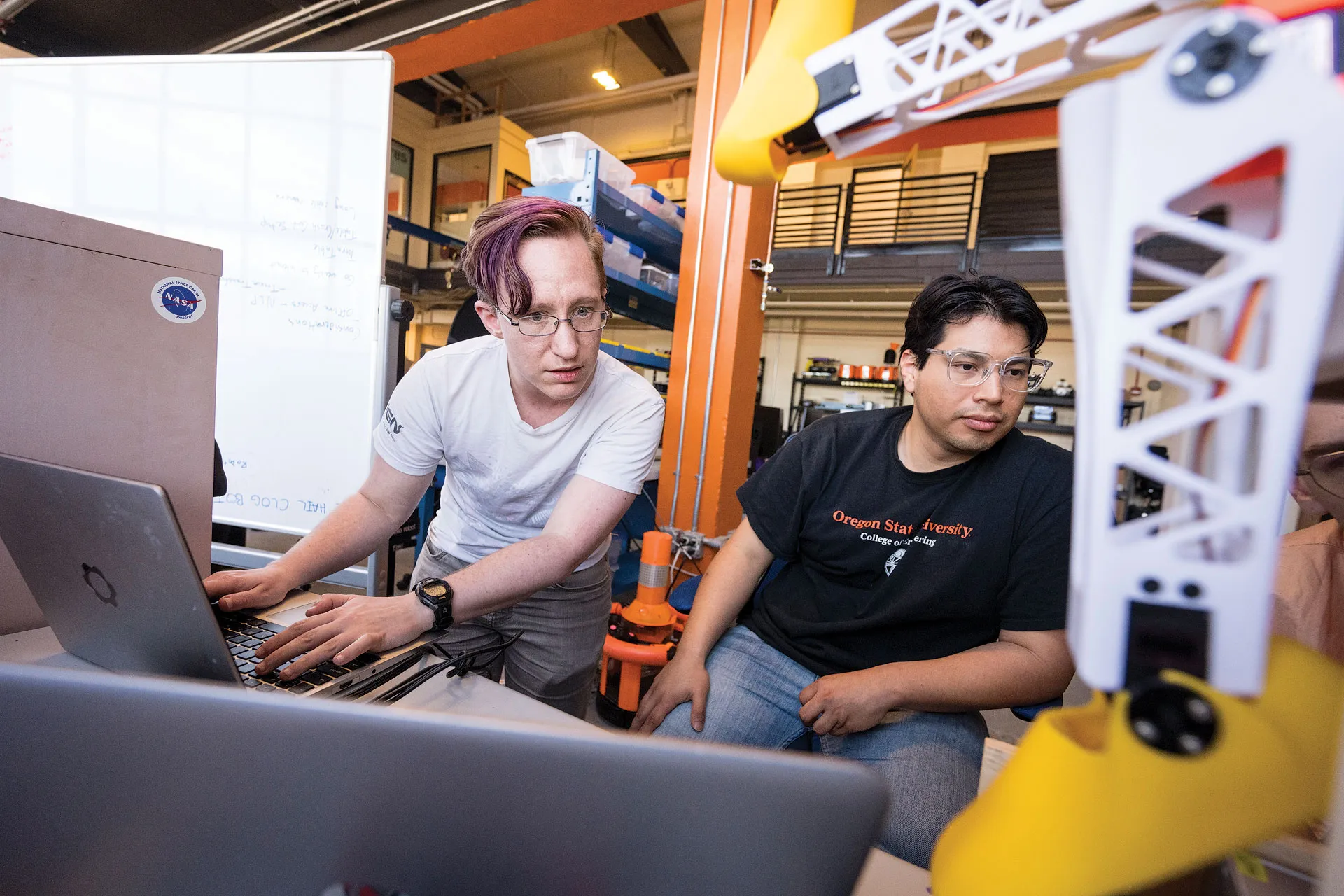
“If we could offload some of the most monotonous tasks in a facility to robots instead of people, we can provide more opportunities for high-value human-to-human interaction and care,” Fitter said.
Fitter spent the first few years of the project making observations and conducting interviews at the facility to better understand the needs and values of the people there. The team has been testing a prototype with residents to refine its design before installing the robot for a longer test period next year.
On the farm
Oregon State is part of a coalition of universities and industry partners using AI to create solutions for global agricultural challenges like water scarcity, severe weather events, and labor shortages. The AgAID Institute is one of 11 AI research institutes launched by the National Science Foundation and among two funded by the U.S. Department of Agriculture-National Institute of Food and Agriculture in 2021.
Developing fruit-picking and pruning robots for apples and blueberries are among the projects within the AgAID Institute.
“For specialty crop producers it's getting harder to find people to do some of these tasks,” said Joe Davidson, associate professor of robotics and mechanical engineering.
Unlike factory robots, agricultural field robots have to adapt to an unstructured environment. Another challenge is minimizing damage to the fruit. Over the years, the apple-picking robot developed by Davidson and Cindy Grimm, professor of robotics, has evolved to a gentler prototype with vacuum suction cups instead of fingerlike grippers.
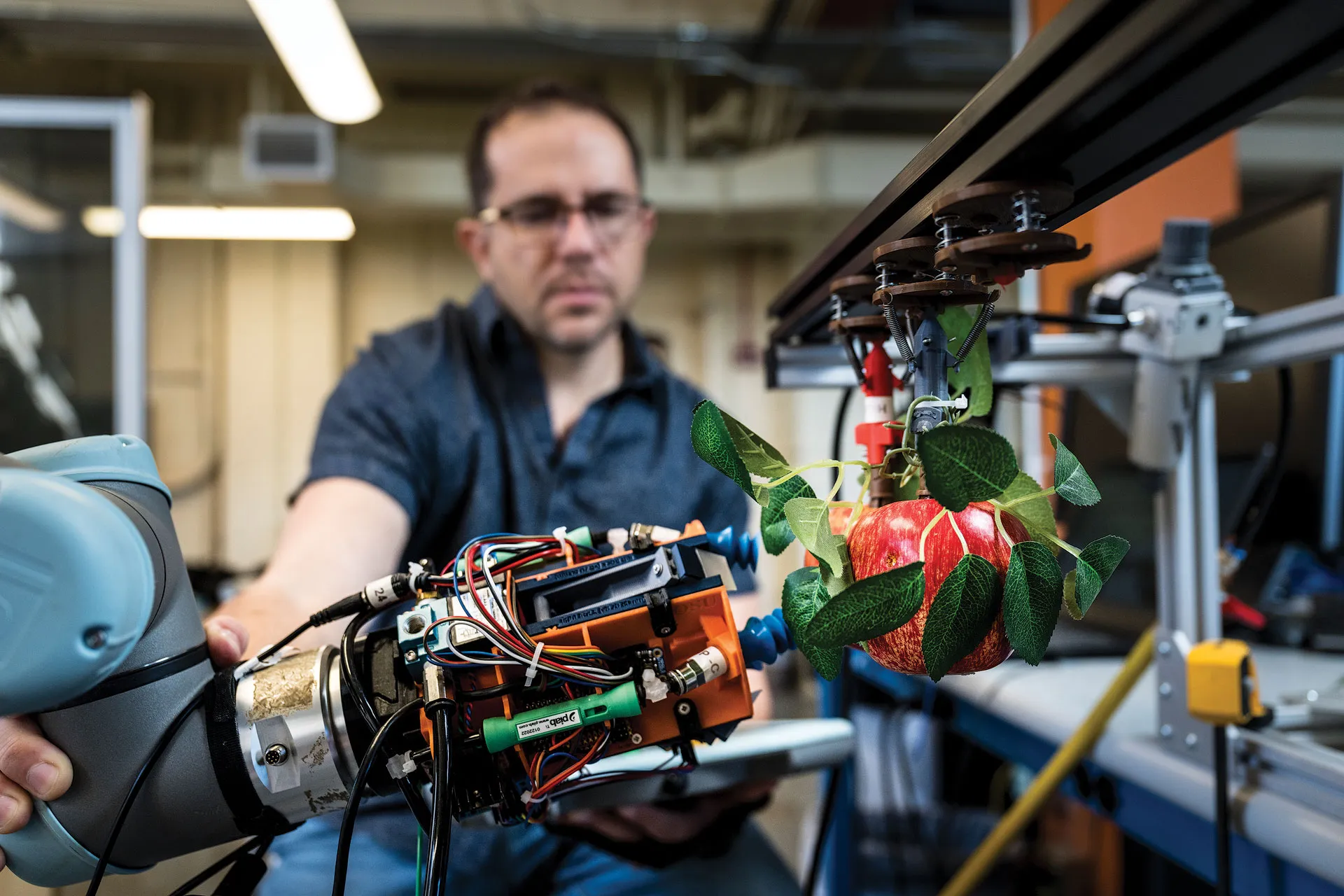
Research can be slow going because of the seasonal nature of agriculture. There are only a few weeks during a year when apples can be harvested, for example.
“One of the interesting areas in robotics right now is trying to train robots in digital environments,” Davidson said. “In order to do that you need models that faithfully replicate the physics of the real crop.” In addition to field testing the robots, the researchers are taking images and other measurements they can use in simulations throughout the year. The Graf Hall lab also has artificial trees and fruit to enable experiments year-round.
Davidson predicts robots will be deployed in farm fields in the next five to 10 years. He is confident that research advances will be accelerated by collaborations with researchers within the AgAID Institute and the College of Agricultural Sciences at Oregon State.
In the air
Will swarms of unmanned aerial vehicles be able to aid humans in wildland firefighting or package delivery? Collaborative research with Raytheon BBN, Oregon State, and Smart Information Flow Systems has taken a big step toward realizing such a future. This team has demonstrated that one person can supervise more than 100 autonomous ground and aerial robots.
“The project required taking off-the-shelf robots and building the autonomy needed for them to be deployed by a single human, called the swarm commander,” said Julie A. Adams, professor of computer science and CoRIS associate director for research.
“That work also required developing not just the needed systems and the software, but also the user interface for that swarm commander to deploy the ground and aerial systems.”
During field trials, the team assessed commanders’ workload levels using data from physiological sensors. An algorithm estimated sensory channel workload levels and overall workload. Although commanders did cross the overload threshold, it was a small portion of the deployment time, and they completed missions with more than 100 vehicles.
On two feet
Humanoid robots are getting smarter at Oregon State. Bipedal robots like Digit need to be adaptable to a variety of terrains and able to carry loads of different weights. To help them achieve smarter locomotion and lifting, Oregon State researchers are training robots using AI.

Alan Fern, professor of computer science, and his students employed reinforcement learning to teach Cassie, the forerunner to Digit, to traverse rough terrain using cameras for vision. They trained the robot in a computer simulation, then tested it in real life, showing it can handle stairs and big blocks.
Studies with the full-body humanoid, Digit, have demonstrated the robot can learn skills like picking up and carrying boxes of various sizes and weights while maintaining balance using reinforcement learning. In a recent study, Digit learned to mimic whole-body motions, which could speed up the process of teaching the robot complex actions when it is deployed in the real world.
In the body
“If someone is wearing a prosthetic or using a neural chip, are they human or not human?” asks Ravi Balasubramanian, assistant professor of robotics and mechanical engineering.
Balasubramanian’s perspective is based on his background in robotics, computational neuroscience, and biomechanics. His research has two directions: creating human-inspired robotics for tasks such as grasping and manipulating objects and developing robot-inspired applications such as implants designed for tendon-transfer surgeries.
Tendon-transfer surgeries restore muscle and tendon function to patients with diminished grip strength. The implant Balasubramanian developed is passive, meaning it does not require motors, electronics, or control signals. Instead, the implant uses pulleys and other mechanisms to amplify or distribute the force of the muscles to improve grip strength.
“We have excellent clinical partners who have helped us improve the design,” Balasubramanian said. The implant, simplified over several iterations, does not require sutures, making it easier for surgeons to use.
With experts in biomaterials, biomechanics, and hand surgery, Balasubramanian has conducted multiple studies to validate the implant’s safety and efficacy. He is working to commercialize the technology through the spinout company OrthoMechanica. The company recently received a 12-month Small Business Innovation Research Phase 1 grant from the National Science Foundation to support bringing the device to market.
A growing robotics program
This fall, the faculty in CoRIS, now numbering more than 40, grew by two more.
“One of the things that really attracted me to join the faculty at Oregon State is the ability to collaborate with so many amazing peers and complement my areas of expertise with theirs in order to help build robot systems that are much more capable than I could build just by myself,” said Brian Do, assistant professor of mechanical engineering.
Brian Do comes to Oregon State with an impressive background: a bachelor’s from the Georgia Institute of Technology, a doctorate from Stanford University, and a postdoctoral fellowship at Yale University. His research is focused on the design and modeling of human-centered robots. He works with pliable materials, such as silicones, fabrics, and plastics.
Examples of Do's research:
- Vinelike robots that can grow, wrap around objects, and manipulate them like an elephant trunk.
- Variable-stiffness robots that combine the advantages of soft robots and traditional rigid robots.
David Kaber was previously at the University of Florida, where he was the Dean’s Leadership Professor and Chair in the Department of Industrial and Systems Engineering. His research is focused on human-AI teaming, such as AI agents that can help humans make decisions in high-stress situations.
Examples of Kaber's research:
- An AI agent to assist Black Hawk helicopter pilots dealing with unexpected events like thunderstorms.
- An interface to train amputees to use powered prostheses.
